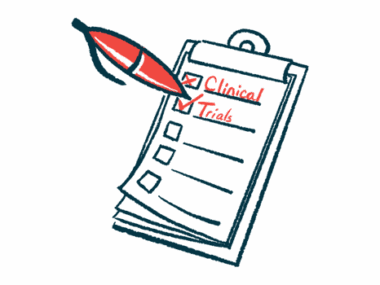Therapeutic-dose efzofitimod reduced sarcoidosis relapse rates
Patients given subtherapeutic dose saw relapse rate of 54.4%
Written by |

A study shows therapeutic doses of Atyr Pharma’s experimental therapy efzofitimod were associated with a lower rate of relapse in people with pulmonary sarcoidosis who were tapering oral corticosteroids, a mainstay treatment linked with toxic side effects when given for long periods and at high doses.
While the relapse rate in the therapeutic dose group was 7.7%, this significantly increased to 54.4% among those in the subtherapeutic group. The study was a post hoc analysis of data from patients treated with different doses of efzofitimod or a placebo in a Phase 1b/2a clinical trial. A post hoc analysis is one that’s specified and performed after a trial is complete.
“Many patients find it difficult to taper and/or maintain reduced steroid doses, as symptoms often flare [worsen] or disease remains refractory [unresponsive], so the low relapse rate seen for the efzofitimod therapeutic group and a significant difference in time-to-first-relapse in this 24-week study is impressive,” Ogugua Ndili Obi, MD, associate professor of medicine and clinical director of the sarcoidosis program at the Brody School of Medicine at East Carolina University, and the study’s first author, said in a company press release. “The ability of a therapy such as efzofitimod to maintain disease control while decreasing or discontinuing steroid use entirely would be clinically important and very meaningful to patients.”
The results,“Therapeutic Doses of Efzofitimod Demonstrate Efficacy in Pulmonary Sarcoidosis,” were published in the European Respiratory Journal Open Research.
In sarcoidosis, inflammatory clumps of immune cells called granulomas form in tissue, with the lungs being most commonly affected, where the disease is called pulmonary sarcoidosis. Corticosteroids have been a cornerstone of sarcoidosis treatment, but their long-term use, especially at high doses, is associated with toxic side effects and lower quality of life.
Lung function gains with therapeutic dose of efzofitimod
Efzofitimod, formerly ATYR1923, is designed to reduce inflammation by modulating the activity of neuropilin-2 (NRP-2), a protein on the surface of immune cells that contributes to inflammation and granuloma formation.
In Atyr’s placebo-controlled Phase 1b/2a study (NCT03824392), 37 patients with pulmonary sarcoidosis were randomly assigned to receive an infusion into the vein of one of three efzofitimod doses — 1, 3, or 5 mg/kg — or a placebo for 24 weeks, or nearly six months. All the participants were treated with oral corticosteroids, ranging from 10-25 mg/day, and underwent a forced steroid tapering regimen in the first eight weeks. A successful taper was defined as being able to reduce the dose of oral corticosteroids to an amount equal to or less than 5 mg a day for a minimum of five days in a row.
Treatment with efzofitimod eased symptoms, improved lung function, and reduced the need for oral corticosteroids, the results showed.
Here, researchers at East Carolina University and Northwestern University in Chicago assessed whether the time-to-first-relapse was different between patients in the different groups, a subtherapeutic group of 20 patients who received either a placebo or a 1 mg/kg dose and a therapeutic group of 17 patients who received either a 3 or 5 mg/kg dose. The division followed an in vitro (lab) study wherein the minimal concentration of efzofitimod that could inihibit granuloma formation was established.
All but five patients — three in the subtherapeutic and two in the therapeutic group — were unable to taper the dose of their oral corticosteroids to a maximum of 5mg/day.
Eight patients in the subtherapeutic group relapsed against only one in the therapeutic group. Moreover, it took a median of 126 days for a first relapse in the subtherapeutic group, which was significantly shorter than the only relapse in the therapeutic group. This corresponded to a relapse rate of 54.4% in the subtherapeutic group and 7.7% in the therapeutic group.
Consistent with previous findings, therapeutic doses of efzofitimod led to sustained improvements in lung function over the subtherapeutic doses, as assessed by forced vital capacity (FVC), which measures how much air can be forcibly exhaled from the lungs after a deep breath.
“We continue to publish data from our Phase 1b/2a study that further demonstrate the efficacy of efzofitimod in pulmonary sarcoidosis patients and positions this first-in-class immunomodulator as a promising new treatment option that can reduce or avoid steroid-related toxicity,” said Sanjay S. Shukla, MD, president and CEO of Atyr. “We believe we are on the cusp of a paradigm shift in the treatment for sarcoidosis, where patients may have the opportunity to receive clinically validated therapies that can treat their underlying disease without incurring added harm.”






